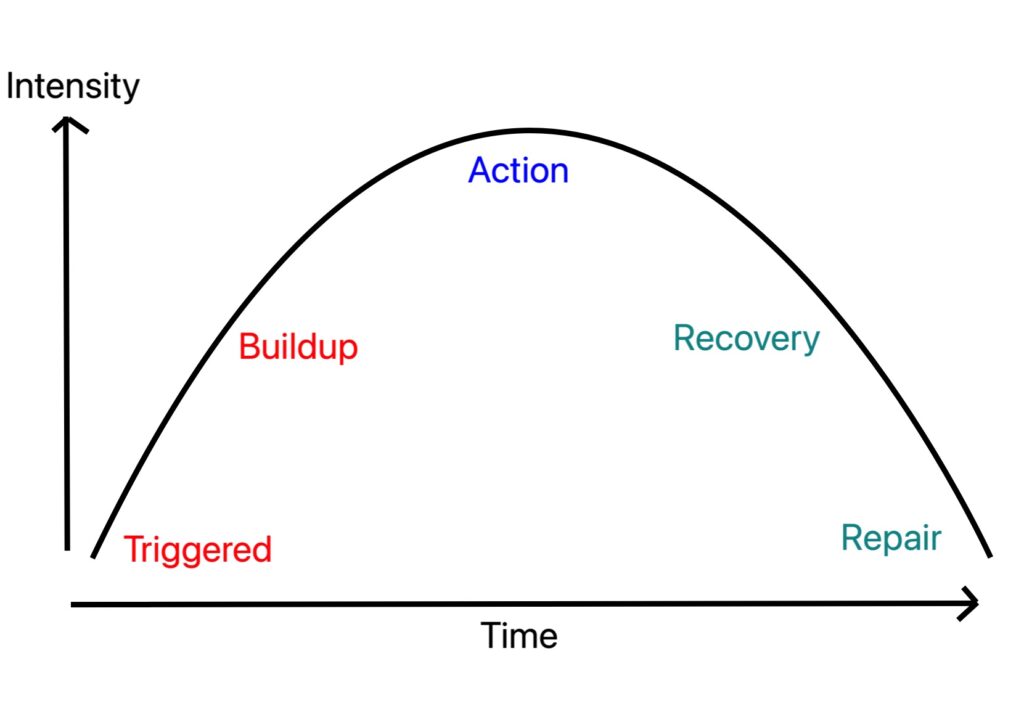Anger is a normal emotion that we experience when we perceive that something has gone wrong in our life. That perception may be right or wrong, and that’s precisely what makes anger such a tricky emotion to manage.
We get angry when we perceive that our rights have been violated, our boundaries have been crossed, and we’ve been wronged or mistreated.
Regardless of the accuracy of our perceptions, learning to manage anger is a critical social skill.
5 Levels of anger
Think of anger as a bell curve. It rises in intensity and peaks at the top. The top is where we are completely under the grip of anger and act on it. Then, after we’ve acted on our anger, it subsides.
Anger, therefore, has levels or stages.
In a previous article, I discussed the eight stages of anger. Here, I’ve condensed that into five stages:
1. Triggered
We get triggered when we perceive a threat in our environment.
2. Buildup
Anger builds upon itself over time, pushing us to act on it.
3. Action
This is the peak moment when we act on our anger.
4. Recovery
This level is when we experience relief from anger.
5. Repair
The last stage is when we integrate the anger episode into our psyche and learn from it.

Taking the anger levels test
This test consists of 20 items on a 5-point scale ranging from Strongly agree to Strongly disagree. It measures your current level of anger. It gives you a score on each level of anger, except the ‘action’ stage.
Of course, when you’re acting on your anger, you can’t be taking some online test about anger.
The test is confidential; your results aren’t stored in our database.


